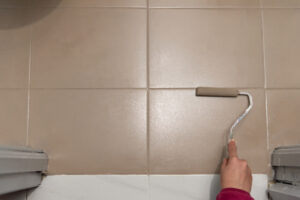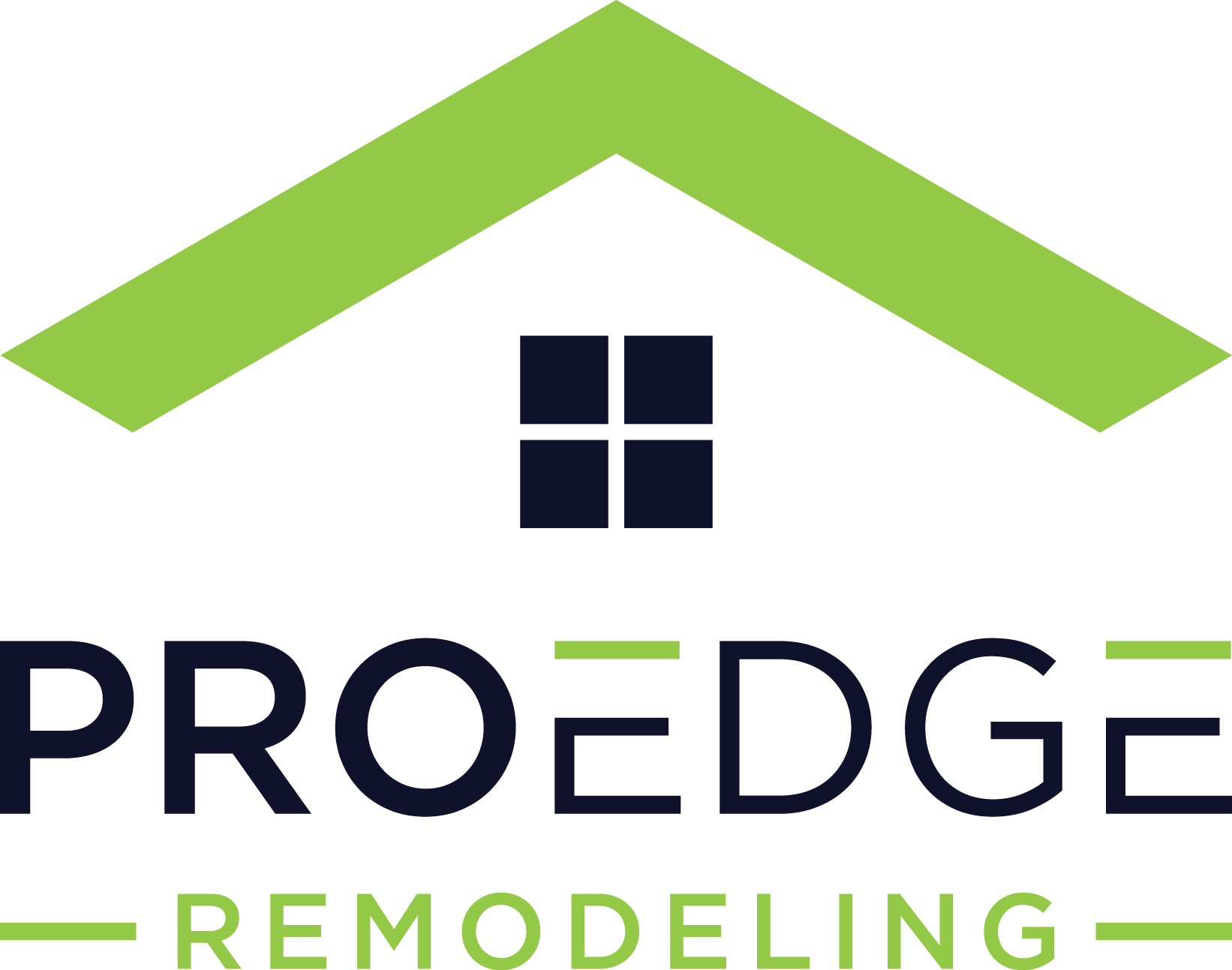DIY Bathroom Remodel

If you’re tired of your outdated bathroom but don’t want to spend the money on professional renovations, there are many ways to do a DIY bathroom remodel.
Don’t worry, you don’t have to be a carpenter, electrician, or plumber. These changes are something anyone can do, saving you thousands of dollars on a remodel.
Can I Renovate my Bathroom by Myself?
While it’s possible to renovate your bathroom yourself, you likely can’t do everything. For example, if you want to do a floor plan remodel, you’ll need help. Likewise, if you’re moving electricity and plumbing, you need a professional to handle it to ensure it’s done right and meets your county’s code.
However, there are plenty of renovations that fit into the DIY realm, saving you money and giving you the freedom to design a bathroom you love.
Is it Cheaper to Renovate a Bathroom by Yourself?
For most people, a DIY bathroom remodel will cost roughly half of what it costs to have it done professionally. However, time of project completion is an important factor to take into account.
When you pay a professional, the job is usually done in a month or less. But when you do it yourself, you might not have 8 hours a day to put into the job. You also may not know what you’re doing with every single task, causing it to take more time.
So financially, it’s cheaper to do a DIY bathroom remodel, but you must consider the time you’re giving up and the opportunity cost of it.
What’s the Process for a DIY Bathroom Remodel?
If you’re doing a full bathroom remodel, follow these steps:
1. Remove Fixtures
If you’re installing new lighting, toilets, tubs, or showers, you must first remove what’s already in place. This may require dealing with drywall, electricity, and plumbing, so make sure you’re fit to do the job. In addition, you may need a second set of hands when removing fixtures.

2. Remove Flooring
After removing all fixtures, remove the floor if you’re replacing the floor. Consider also removing the baseboards and replacing them. This will give your new floor a longer life, but it’s not required.
3. Look for Rotting or Mold
After removing the fixtures, if you notice any rotting or mold on the baseboards, behind the shower, or on the walls, go ahead and replace them. A temporary fix such as bleaching or just covering it up will only lead to future problems with rotting or mold. This step will create more work and expense, but in the end, you’ll be glad you did it. If you don’t, you’ll end up tearing down your hard work in the near future to deal with these issues.
4. Install the New Shower or Tub
This is one step you might need professional help with, especially if you don’t have another set of hands. If you take on shower or tub installation yourself, ensure the new tub or shower fits the existing space so you don’t have to deal with plumbing or floorplans.
5. Install New Flooring
When you’re sure the subfloor is safe and free from rot or mold, you can lay the new flooring. If you choose tiles, it’s more intricate than luxury vinyl planks that lay down in rows. Either way, take your time and ensure the flooring fits the corners and other areas well.
6. Fix Drywall
If you had to knock down any drywall, or there are holes where the old fixtures were, fix the drywall. Use caution around shower walls, vanities, and other sharp corners, ensuring the wall fits seamlessly.
As you configure the drywall, measure the area where the new lighting will go to determine if you’ll have holes to patch if the lighting lines up differently.
Once the drywall is up, you can paint it. A fresh coat of paint will give your bathroom an entirely new look on its own and will add to the effect of the new fixtures.

7. Install the New Vanity
If you’re replacing the vanity, it’s one of the last things to go in after installing the floor. The new vanity goes first. Next, you can install a new sink and faucet. If you’re using the existing vanity, put it back in and consider updating the faucet or sink to give the bathroom a new look.
8. Install New Lighting
The final step is to install new lighting. This is a great time to choose energy-efficient lighting that’s bright enough to make your bathroom brighter but doesn’t waste energy. If you need to move electrical outlets, you may need to hire an electrician for this step. It’s best to not mess with electricity unless you know how to use it.
Tips for DIY Bathroom Remodeling for Beginners
Remodeling your bathroom can greatly increase your home’s value and functionality, but it’s not a job to take lightly.
Here are some tips beginners can use for DIY bathroom remodeling:
1. Plan Before Starting
Don’t try to wing it as you go. Instead, create a plan, look at your budget, and make sure you have the resources for the bathroom remodel you plan. The last thing you want is to be in the middle of a remodel to find out that you can’t do it, don’t have the budget for it, or missed a few steps.
Run your plan by someone who has experience with a bathroom remodel. You might even consider talking to a professional to get an idea if you’re on the right track.
2. Consider what you can Keep
If your entire bathroom doesn’t need remodeling, consider what you can reuse. For example, if the vanity is in good condition or the shower doesn’t need any remodeling, leave those elements as is. Only renovate what’s necessary when doing a DIY bathroom remodel. Even if you have to take the vanity out to replace the floor, you can reuse what you have if it’s in good condition.

3. Don’t be Afraid to Outsource
If there’s something you can’t do, that’s okay. You’re saving money doing most of the work yourself, but don’t risk doing something wrong.
The largest jobs to outsource are plumbing and electrical work. Unless you’re an expert, you shouldn’t attempt them. Let the experts come in and do that work, and you handle the rest.
4. Have a Plan for the Unexpected
Expect things to go wrong. You never know what you’re getting into until you start taking things apart.
For example, if you take the shower out and find mold behind the walls or remove the floor and the subfloor is bad, you may need to replace what’s there, which will be a more expensive endeavor. Have a surplus fund to handle the unexpected; if you don’t need it, consider it a bonus!
5. Create a Timeline
If you work full-time, chances are you’ll only work on the bathroom on the weekends. If you have another bathroom you can move into while working on it, you don’t have much to worry about.
However, if you don’t have an extra bathroom, you’ll need to plan your renovations to finish the big stuff quickly, keeping your bathroom operational.
6. Watch Videos
YouTube can be a lifesaver when doing any home projects. Watch as many videos as you can before starting. This will not only help you get ideas for renovations you want to do, but you’ll see the successes and failures of others, learning what you should and shouldn’t do.
7. Enlist Help
Don’t try to do a bathroom remodel completely on your own. Instead, have an extra set of eyes and hands around to help you. When you have someone else there, you can have help lifting, demolishing, and putting fixtures back.
You’ll also have someone helping you determine if what you’re doing is right or if you should make other choices.

8. Consider Only Cosmetic Changes
If you aren’t handy but want to upgrade your bathroom, consider only taking on cosmetic changes. A simple coat of paint, a new light fixture, or a new countertop can make a dramatic difference in your bathroom.
You don’t have to demolish the bathroom to renovate it. Some people change out the lights, the faucet, and add new shelving and feel like they have a completely new bathroom.
If you don’t need a floorplan change because the bathroom isn’t functional, this can be a great way to renovate your bathroom without breaking your back or the bank.
FAQs
What permits are needed in order to remodel a bathroom?
The permits needed for a bathroom remodel can depend on where you live and the extent of the project. It’s best to check with your local buildings department to determine which permits are required before beginning the remodeling work.
How do I ensure that my DIY bathroom remodel stays within budget?
Prioritize what you need and want for your bathroom remodel. Make a list of all essential items, such as fixtures, accessories, tile, and paint colors. Then separate them into “must-haves” or “nice-to-haves”. Stick to the “must haves” budget first, then fill in with the “nice to have” if the budget allows!
How to decide on the right materials for my bathroom remodel?
When choosing materials for a bathroom remodel, consider factors such as durability, moisture resistance, and style. It’s best to select materials that are specifically designed for use in a bathroom.
What steps can I take to make my bathroom more eco-friendly?
There are several ways to make your bathroom more eco-friendly when renovating. Installing water-saving fixtures and choosing sustainable materials with low VOCs (Volatile Organic Compounds) are two great options. Additionally, adding energy-efficient lighting and a ventilation system will help improve air quality in the space.
How do I make my bathroom look bigger?
Making clever design choices is an effective way to create the illusion of more space in your bathroom. Start by using light colors on walls and floors; then, add large mirrors and maximize natural light sources. Also, consider removing any unnecessary walls or partitions that are taking up room.
Final Thoughts
A DIY bathroom remodel is entirely possible and can help increase your home’s value. Whether you do an entire DIY remodel or contract some of the work out, it’s a great way to save money and create the bathroom you want.

Anna has over six years of experience in the home services and journalism industries and serves as the Content Manager at MyHomePros.com, specializing in making complex home improvement topics like HVAC, roofing, and plumbing accessible to all. With a bachelor’s degree in journalism from Auburn University, she excels in crafting localized, comprehensive guides that cater to homeowners’ unique needs. Living on both coasts of the United States has equipped her with a distinctive perspective, fueling her passion for turning any house into a cherished home through informed, personalized decision-making.
Connect with top-rated local contractors who can help you with siding, roofing, HVAC, windows, and more. Get free quotes from verified professionals in your area today.








